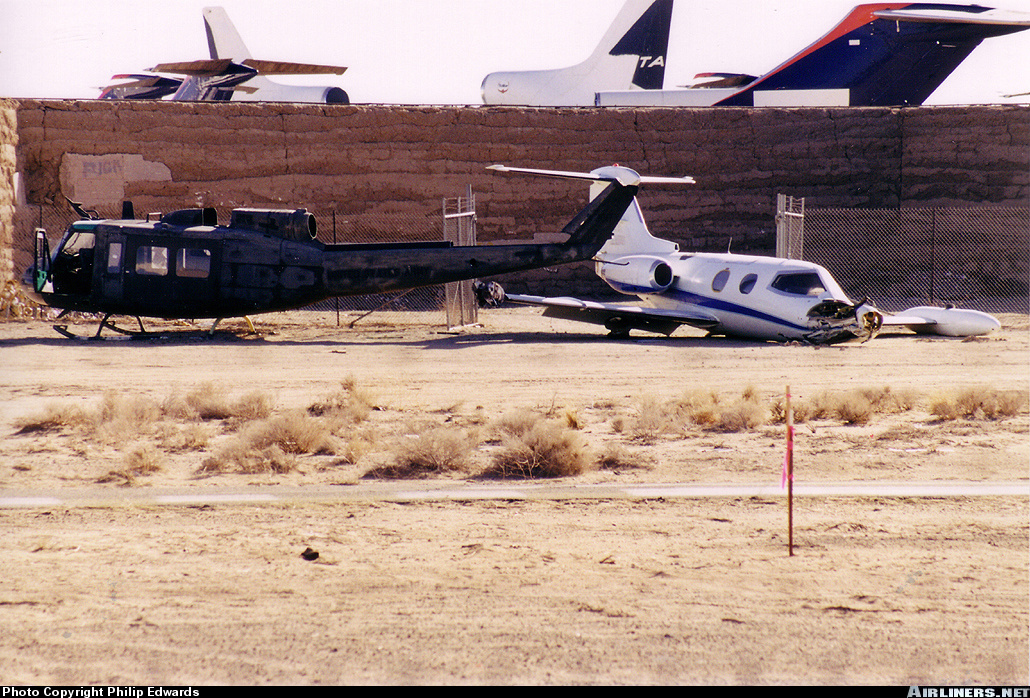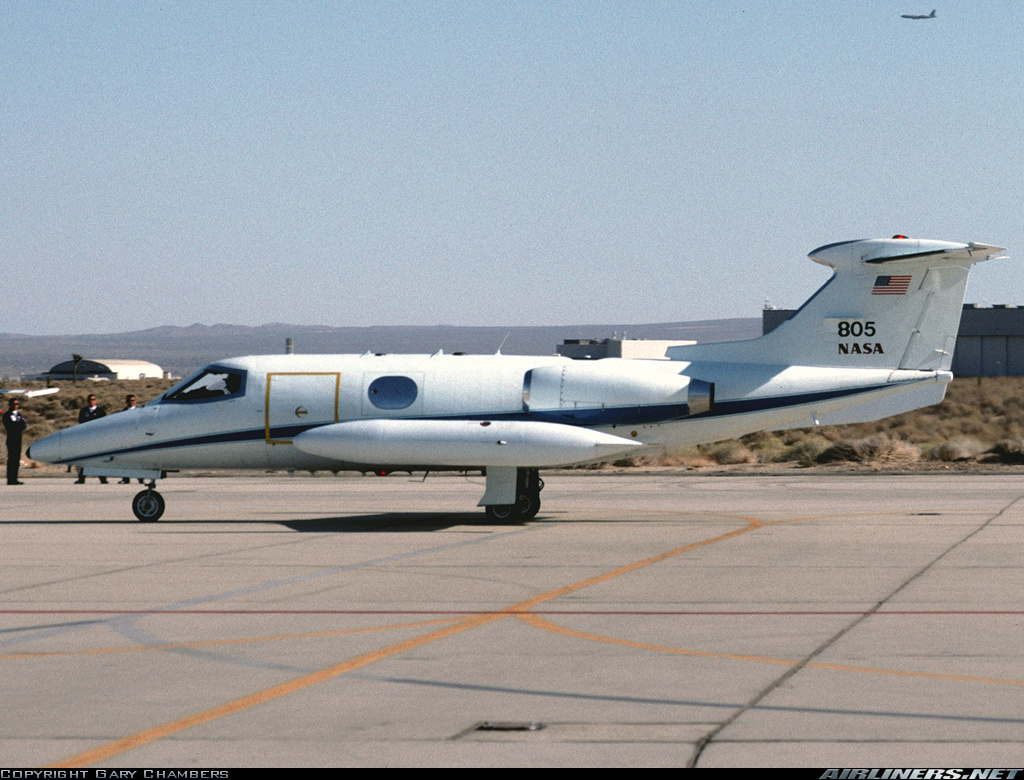Country
Crash of a Learjet 24D in Rønne
Date & Time:
Sep 15, 2012 at 1340 LT
Registration:
D-CMMM
Survivors:
Yes
Schedule:
Strausberg - Rønne
MSN:
24-328
YOM:
1976
Crew on board:
2
Crew fatalities:
Pax on board:
0
Pax fatalities:
Other fatalities:
Total fatalities:
0
Circumstances:
The accident occurred during a private IFR flight from Strausberg Airport (EDAY), Germany, to Bornholm Airport (EKRN), Denmark. Before the flight, an ATS flight plan was filed. Before takeoff at EDAY, the aircraft was refueled with 200 liters of jet fuel. According to the ATS flight plan, the pilot stated the total endurance to be 01:30 hrs and the Estimated Elapsed Time (EET) to be 00:30 hrs. The pilot informed the AIB DK that the estimated total endurance before takeoff at EDAY was approximately 01:00 hrs. The aircraft departed EDAY at 10:58. Enroute, the pilot observed a low fuel quantity warning light. Otherwise, the flight was uneventful until the approach to EKRN. At 11:32:00 hrs and at a distance of approximately18 nm southwest of EKRN, the pilot cancelled the IFR flight plan and continued VFR for a visual approach to runway 29. While descending inbound EKRN, the airspeed was decreasing. At 11:37:08 hrs, the pilot reported to Roenne Tower that the aircraft was turning final for runway 29. The aircraft was cleared to land. The wind conditions were reported to be 280° 19 knots maximum 29 knots. The aircraft was configured for landing (the landing gear was down and the flaps extended to 40°). On a left base to runway 29, both engines suffered from fuel starvation. At 11:39:18 hrs, the pilot three times declared an emergency. The aircraft entered a stall and impacted terrain in a field of sweet corn. A search and rescue mission was immediately initiated.
Probable cause:
CONCLUSION:
Inadequate en route fuel management resulted in fuel starvation of both engines, while the aircraft was flying at low altitude and the airspeed was decreasing. The dual engine flame out and the subsequent aircraft speed control led to an unrecoverable stall and consequently caused the accident.
FINDINGS:
On board the aircraft in the pilot’s personal belongings, the AIB DK found 2 Airline Transport Pilot Licenses (ATPL) issued by the US Federal Aviation Administration (FAA). The 2 US ATPL licenses had the same FAA license number but the names of the license holders were different. The names of the license holders were inconsistent with the pilot’s Iranian identity.
The BFU informed the AIB DK that the pilot was neither in possession of a valid German pilot license nor a German validation of an US license, which was required to operate a German registered aircraft.
The NTSB informed the AIB DK that the pilot was not in possession of a valid US pilot license.
It has not been possible for the AIB DK to determine whether or not the pilot was in possession of valid pilot license issued by another state.
The BFU informed the AIB DK that the certificate of aircraft registration was cancelled in 2009. Later on in the investigation, the BFU corrected this information. On February 2nd , 2012 and due to a missing airworthiness certificate, the Luftfahrt-Bundesamt (CAA - Germany) revoked the certificate of aircraft registration.
The latest valid airworthiness certificate was issued on the 8th of March 2004 and expired on the 31st of March 2005.
At the time of the accident, the aircraft was not recorded to be maintained by a JAR 145 maintenance organization, a maintenance program or a Continuing Airworthiness Management Organization (CAMO).
Inadequate en route fuel management resulted in fuel starvation of both engines, while the aircraft was flying at low altitude and the airspeed was decreasing. The dual engine flame out and the subsequent aircraft speed control led to an unrecoverable stall and consequently caused the accident.
FINDINGS:
On board the aircraft in the pilot’s personal belongings, the AIB DK found 2 Airline Transport Pilot Licenses (ATPL) issued by the US Federal Aviation Administration (FAA). The 2 US ATPL licenses had the same FAA license number but the names of the license holders were different. The names of the license holders were inconsistent with the pilot’s Iranian identity.
The BFU informed the AIB DK that the pilot was neither in possession of a valid German pilot license nor a German validation of an US license, which was required to operate a German registered aircraft.
The NTSB informed the AIB DK that the pilot was not in possession of a valid US pilot license.
It has not been possible for the AIB DK to determine whether or not the pilot was in possession of valid pilot license issued by another state.
The BFU informed the AIB DK that the certificate of aircraft registration was cancelled in 2009. Later on in the investigation, the BFU corrected this information. On February 2nd , 2012 and due to a missing airworthiness certificate, the Luftfahrt-Bundesamt (CAA - Germany) revoked the certificate of aircraft registration.
The latest valid airworthiness certificate was issued on the 8th of March 2004 and expired on the 31st of March 2005.
At the time of the accident, the aircraft was not recorded to be maintained by a JAR 145 maintenance organization, a maintenance program or a Continuing Airworthiness Management Organization (CAMO).
Final Report:
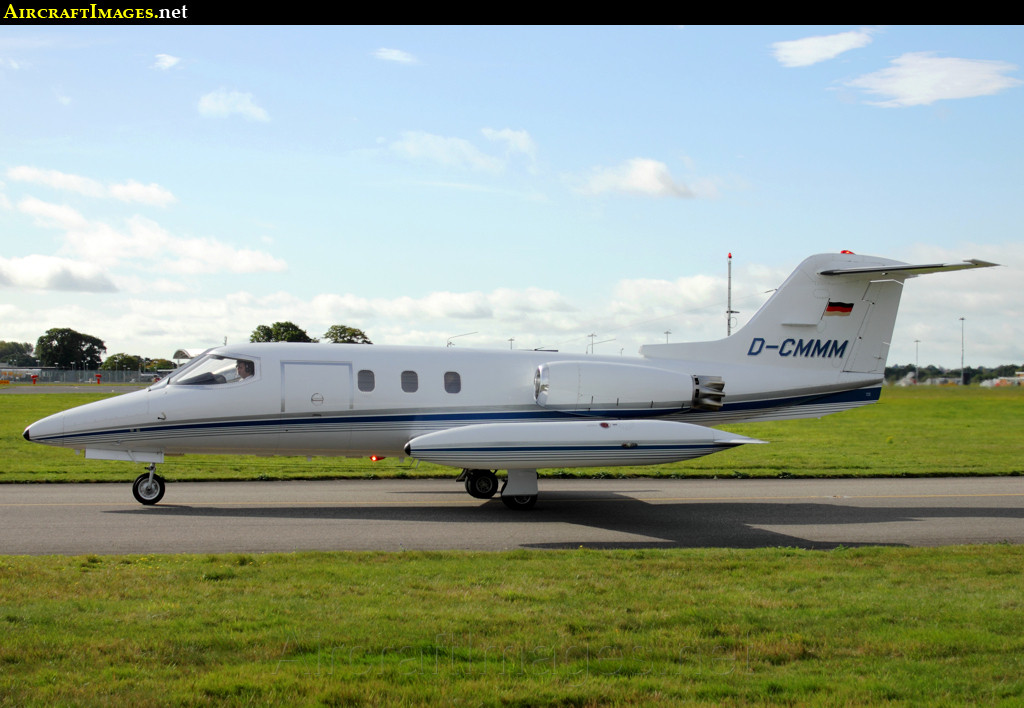

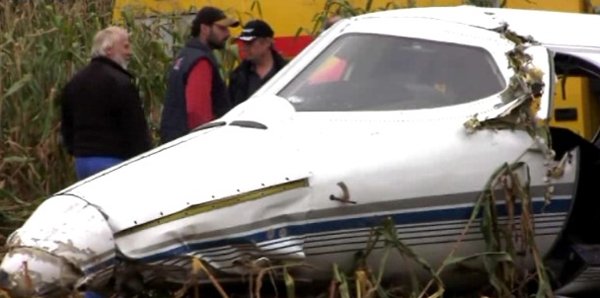
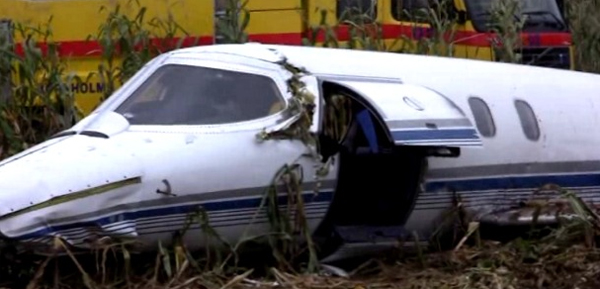
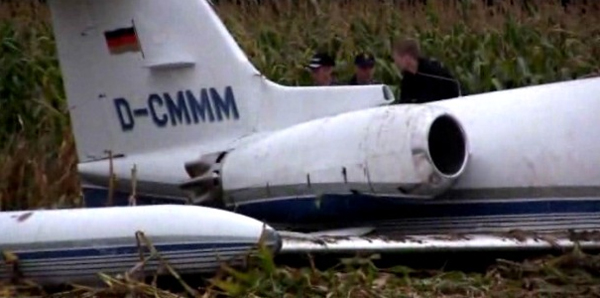

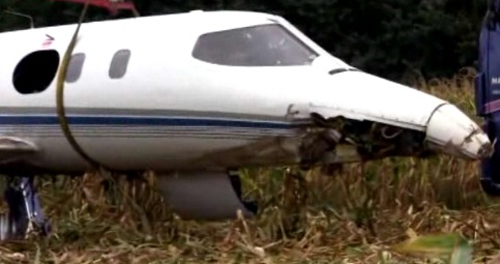
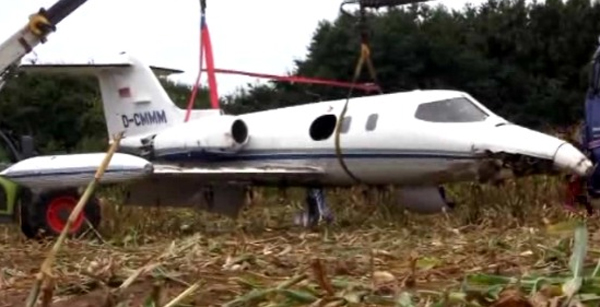
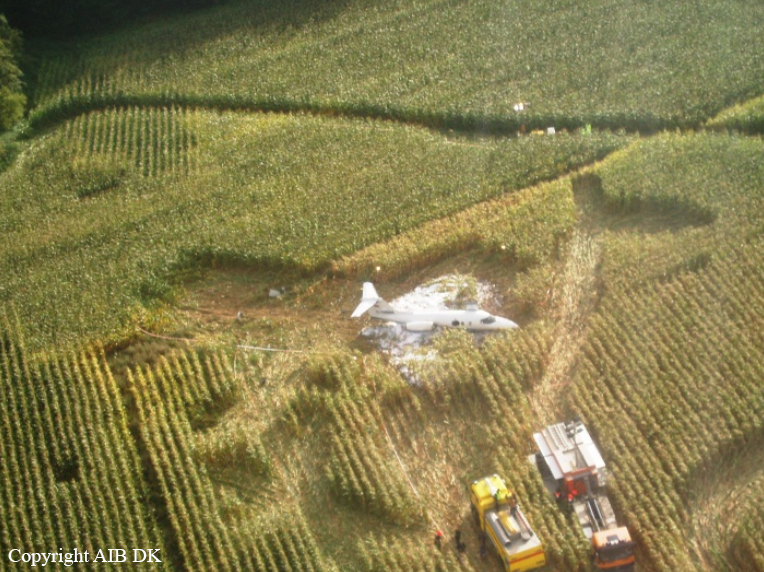

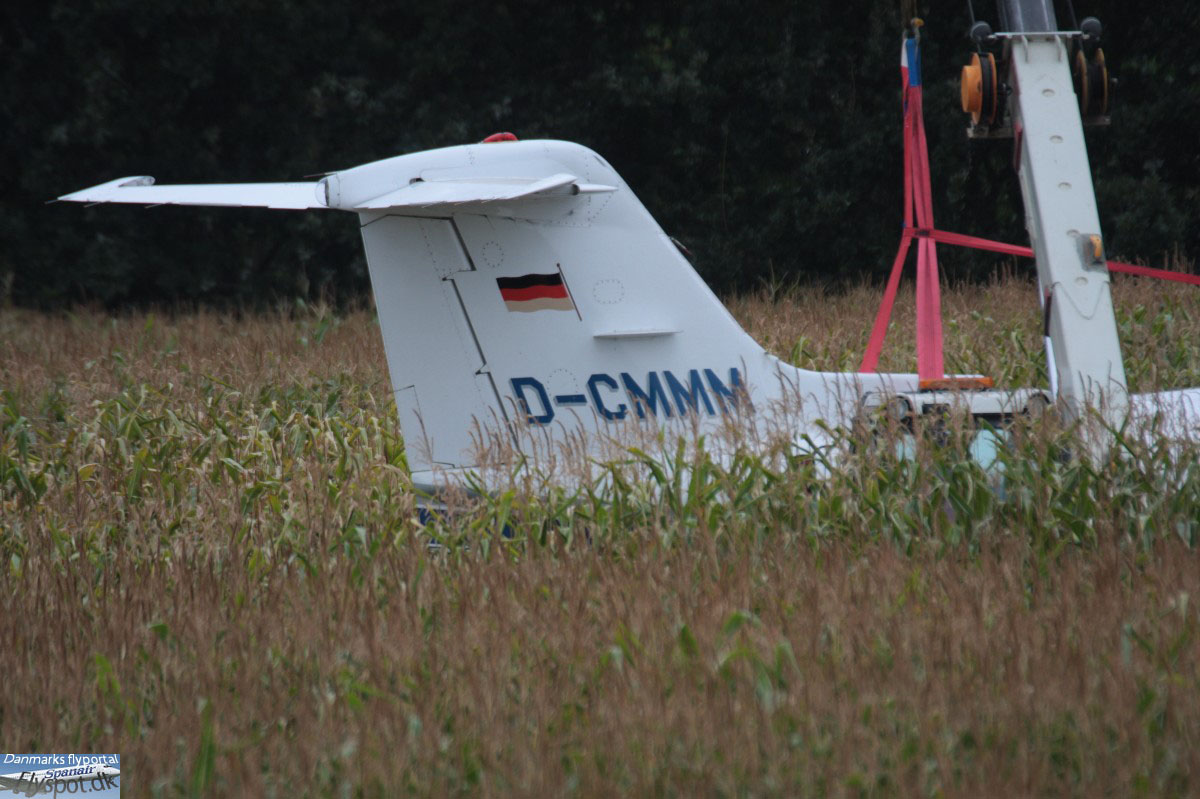
Crash of a Learjet 24 in Pachuca de Soto: 2 killed
Date & Time:
Feb 18, 2011 at 1104 LT
Registration:
XB-GHO
Survivors:
No
Schedule:
Pachuca de Soto - Pachuca de Soto
MSN:
24-141
YOM:
1967
Crew on board:
2
Crew fatalities:
Pax on board:
0
Pax fatalities:
Other fatalities:
Total fatalities:
2
Circumstances:
The crew was completing a local training flight at Pachuca de Soto Airport. After landing, the aircraft went out of control, veered off runway and eventually collided with a building housing a military canine unit, bursting into flames. The aircraft was destroyed and both pilots were killed.
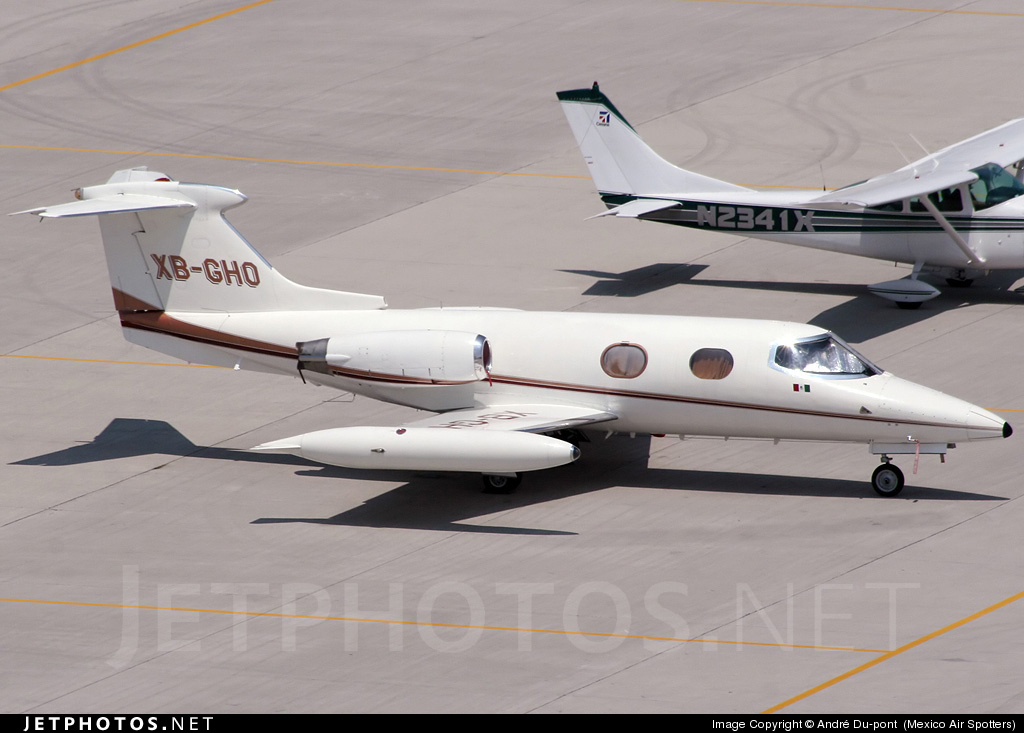
Crash of a Learjet 24F near Guadalajara: 2 killed
Date & Time:
Jan 9, 2007 at 2323 LT
Registration:
N444TW
Survivors:
No
Schedule:
Laredo – Guadalajara
MSN:
24-348
YOM:
1977
Flight number:
AJI878
Crew on board:
2
Crew fatalities:
Pax on board:
0
Pax fatalities:
Other fatalities:
Total fatalities:
2
Circumstances:
On January 9, 2007, at 2323 central standard time, a Gates Learjet model 24F airplane, N444TW, serial number 348, was destroyed upon impact with terrain, about 18.8 nautical miles east of Guadalajara, State of Jalisco, in the Republic of Mexico. The airline transport-rated pilot and the commercial pilot functioning as first officer were fatally injured. The airplane was registered to the Sierra American Corporation of Wilmington, Delaware, and was being operated by Ameristar Jet Charter, Inc., of Addison, Texas, as Ameristar flight 878, a Title 14 Code of Federal Regulations Part 135 on-demand cargo flight. Night visual meteorological conditions prevailed and an instrument flight rules (IFR) flight plan was filed for the flight from Laredo, Texas. The cargo flight had originated in Laredo, Texas, at about 2210, with the Don Miguel Hidalgo International Airport (MMGL) near Guadalajara, Mexico, as its intended destination. Mexican Air Traffic Control personnel reported that the flight had approached MMGL from the north. At 2313, Guadalajara Approach Control cleared the flight to descend to 12,000 feet, provided an altimeter setting of 30.28, and told the flight to expect radar vectors for the ILS runway 28 approach to MMGL. After being provided a vector of 190 to intercept the localizer for the ILS runway 28 approach, there were communications between the flight and the controller to clarify which runway was active, and at 2318:00, the flight was given a right turn to a heading of 200 degrees. At 2318:56 the flight was cleared to descend to 10,000 feet, and at 2320:38, the flight was cleared to descend to 9,000 feet. The airplane was last observed on radar descending through 9,200 feet, while crossing the GDL VOR 085 degree radial.
Probable cause:
Controlled flight into terrain.
Crash of a Learjet 24B in Helendale: 2 killed
Date & Time:
Dec 23, 2003 at 0913 LT
Registration:
N600XJ
Survivors:
No
Schedule:
Chino – Hailey
MSN:
24-190
YOM:
1969
Crew on board:
2
Crew fatalities:
Pax on board:
0
Pax fatalities:
Other fatalities:
Total fatalities:
2
Captain / Total hours on type:
7900.00
Copilot / Total hours on type:
24
Aircraft flight hours:
9438
Circumstances:
The aircraft departed controlled flight and crashed near Helendale, California. The captain and the first officer were killed, and the airplane was destroyed. The flight was operating under the provisions of 14 Code of Federal Regulations (CFR) Part 912 from San Bernardino County Airport (CNO), Chino, California, to Friedman Memorial Airport, Hailey, Idaho. Visual meteorological conditions prevailed for the flight, which operated on an instrument flight rules flight plan. A review of radar data and air traffic control (ATC) transcripts revealed that the flight departed CNO about 0858 and was cleared to climb to an altitude of 29,000 feet mean sea level (msl). About 0909:55, as the airplane was climbing through an altitude of 26,000 feet, the first officer requested a return to CNO. About 0910:01, the controller asked the first officer if he needed to declare an emergency, and the first officer replied that he did not. The controller then directed the flight crew to maintain an altitude of 24,000 feet. Mode C information for the flight showed that, from about 0910:12 to about 0910:59, the airplane descended from 26,500 to 24,000 feet at a rate of about 2,000 feet per minute (fpm). About 0911:08, the controller cleared the flight directly to HECTOR (a navigation fix) and asked the first officer to confirm that the airplane was in level flight at an altitude of 24,000 feet. The first officer did not respond. Radar data showed the airplane descending through 23,000 feet at a rate of about 6,500 fpm about that time. About 0911:24, while the airplane was descending at a rate of about 10,000 fpm, the first officer stated, “we’re declaring an emergency now.” No further transmissions were received from the airplane. No radar data were available after about 0911:35. Starting about 0911:47, mode C information was invalid. The airplane impacted high desert terrain (an elevation of 3,350 feet) about 3 miles southeast of Helendale. The accident site was located about 46 nautical miles (nm) north of CNO. A witness to the accident, who was located about 4.5 miles northwest of the accident site, stated that, after hearing the sound of a jet flying high overhead, he looked up and observed the accident airplane flying straight and level below a high, overcast cloud layer. He stated that the airplane then pitched “nose down a little” and “straightened again.” He also stated that, shortly thereafter, he observed the airplane’s nose pitch “straight down” until it impacted terrain. The witness reported that he did not notice whether the airplane was rotating about its longitudinal axis during the descent, but he did indicate that the airplane appeared to be intact without any components separating from the airplane during the descent. The witness added that he did not observe any smoke or fire before the airplane impacted terrain and that the airplane exploded into a “mushroom cloud” when it impacted terrain. San Bernardino County firefighters, who were performing controlled burns near the accident site, reported hearing an explosion about the time of the accident. The firefighters reported that they looked toward the direction of the explosion and saw a rising smoke cloud. None of the firefighters observed the airplane before the sound of the explosion. The firefighters drove to the accident site and were the first to arrive there. The firefighters extinguished small fires that had erupted as a result of the crash.
Probable cause:
A loss of airplane control for undetermined reasons.
Final Report:
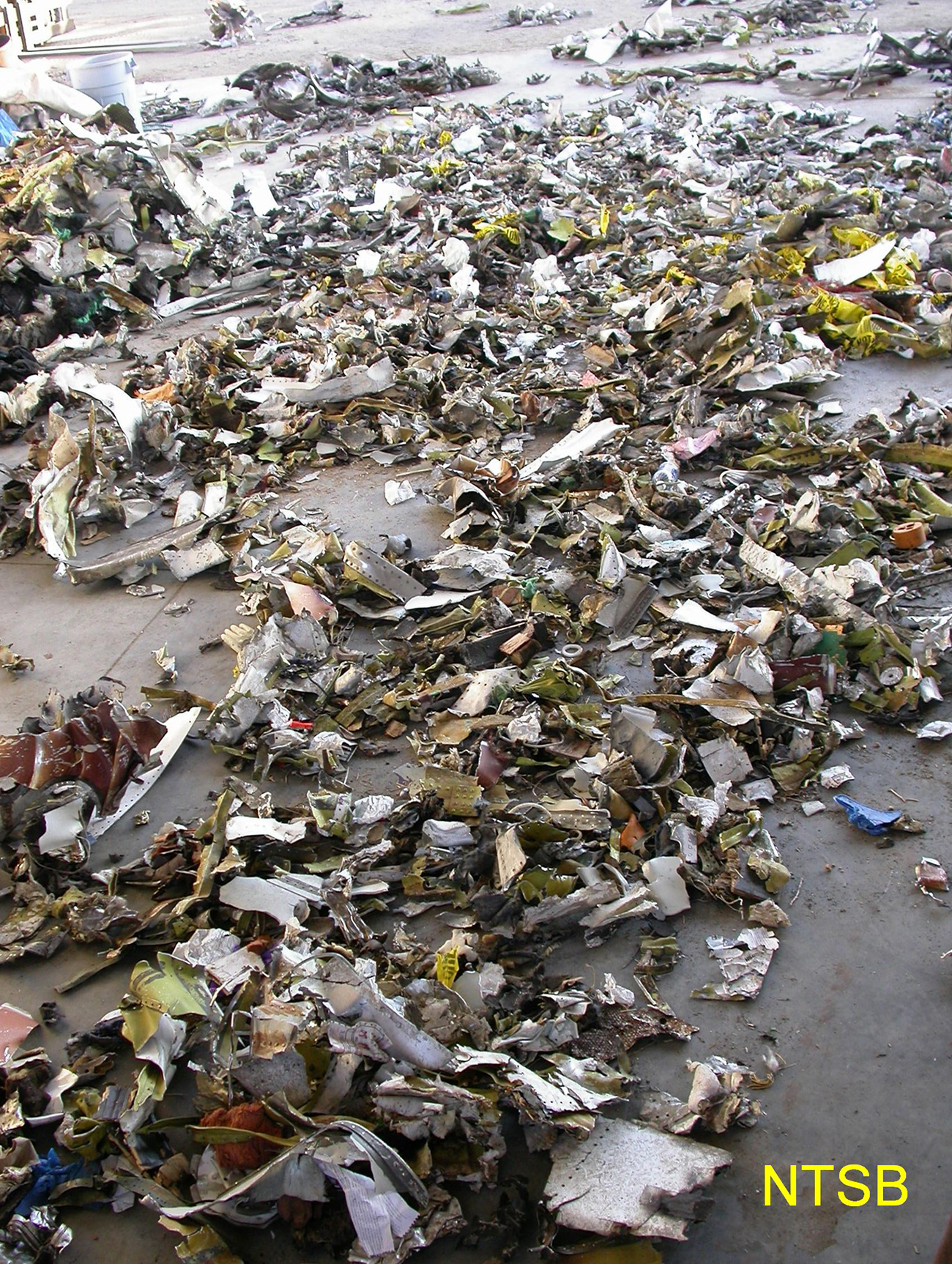
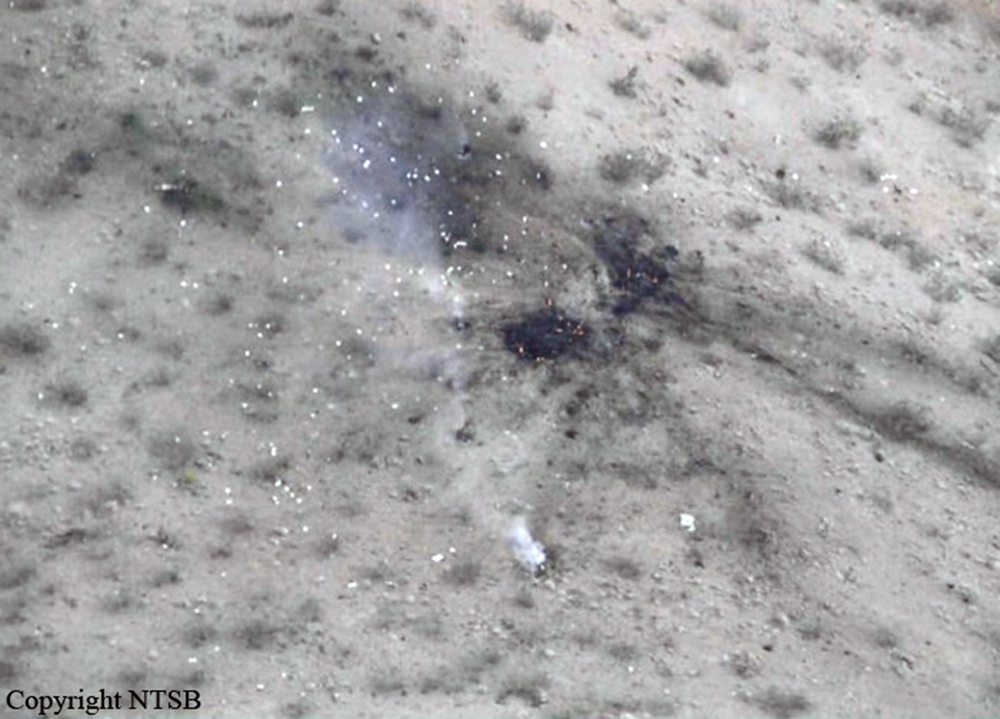
Crash of a Learjet 24D in Saint Louis
Date & Time:
Nov 12, 2003 at 0645 LT
Registration:
N77JL
Survivors:
Yes
Schedule:
Saint Louis – North Platte
MSN:
24-286
YOM:
1974
Crew on board:
2
Crew fatalities:
Pax on board:
2
Pax fatalities:
Other fatalities:
Total fatalities:
0
Captain / Total hours on type:
760.00
Copilot / Total hours on type:
150
Aircraft flight hours:
6653
Aircraft flight cycles:
6504
Circumstances:
The turbojet airplane was destroyed during a forced landing and post accident fire after a loss of power in both engines during takeoff climb. The pilot reported that both engines operated
normally during taxi and pre-takeoff checks. He reported that, "We rotated positive rate gear up, V2 plus 30 flaps up, and at that point we struck birds taking No. 2 engine out. Upon losing No. 2 engine I advanced thrust levers forward and realized that the No. 1 engine was only producing approximately 70% RPM with EGT over read line." He executed a forced landing to a field and the crew and passengers evacuated the burning airplane. The copilot reported, "At approximately 500 to 1,000 ft. above ground level, I observed a large flock of birds straight ahead of us, and then passing just off our nose to the left side. I immediately heard an engine flameout. As I started to go to the checklist for single engine operations, I quickly realized that we were loosing airspeed and unable to maintain altitude. The PIC said we were going down and heading for the best emergency-landing stop." The Cockpit Voice Recorder (CVR) recorded the pilot stating, "We hit a bird," and the copilot stating, "Yep," immediately following the CVR recording a "sound similar to decrease in engine RPM." The inspection of the airplane's fuel system, pneumatic system, engines, fuel controls and fuel pumps revealed no pre-impact anomaly. No physical evidence of bird ingestion was found in either engine. A CVR sound spectrum plot and a flight profile analysis revealed that one engine flamed out almost immediately after the sound of a "thump" on the CVR. The other engine's speed decreased and experienced stalls until the engine speed was reduced to flight idle. The original engine certification tests indicated that compressor stalls occurred when a 2-4 ounce starling was shot ingested into the engine, but physical damage from bird ingestion was very slight due to the all steel construction and geometry of the engine. Engine flameouts, however, were not recorded during the certification tests. A wildlife specialist conducted a bird count at the accident airport two days after the accident occurred, and he reported counting a flock of about 800 European Starlings.
normally during taxi and pre-takeoff checks. He reported that, "We rotated positive rate gear up, V2 plus 30 flaps up, and at that point we struck birds taking No. 2 engine out. Upon losing No. 2 engine I advanced thrust levers forward and realized that the No. 1 engine was only producing approximately 70% RPM with EGT over read line." He executed a forced landing to a field and the crew and passengers evacuated the burning airplane. The copilot reported, "At approximately 500 to 1,000 ft. above ground level, I observed a large flock of birds straight ahead of us, and then passing just off our nose to the left side. I immediately heard an engine flameout. As I started to go to the checklist for single engine operations, I quickly realized that we were loosing airspeed and unable to maintain altitude. The PIC said we were going down and heading for the best emergency-landing stop." The Cockpit Voice Recorder (CVR) recorded the pilot stating, "We hit a bird," and the copilot stating, "Yep," immediately following the CVR recording a "sound similar to decrease in engine RPM." The inspection of the airplane's fuel system, pneumatic system, engines, fuel controls and fuel pumps revealed no pre-impact anomaly. No physical evidence of bird ingestion was found in either engine. A CVR sound spectrum plot and a flight profile analysis revealed that one engine flamed out almost immediately after the sound of a "thump" on the CVR. The other engine's speed decreased and experienced stalls until the engine speed was reduced to flight idle. The original engine certification tests indicated that compressor stalls occurred when a 2-4 ounce starling was shot ingested into the engine, but physical damage from bird ingestion was very slight due to the all steel construction and geometry of the engine. Engine flameouts, however, were not recorded during the certification tests. A wildlife specialist conducted a bird count at the accident airport two days after the accident occurred, and he reported counting a flock of about 800 European Starlings.
Probable cause:
The total loss of power to the right engine and the partial loss of power to the left engine after the airplane encountered a flock of birds during initial climb out, resulting in impeded ram induction airflow.
Final Report:

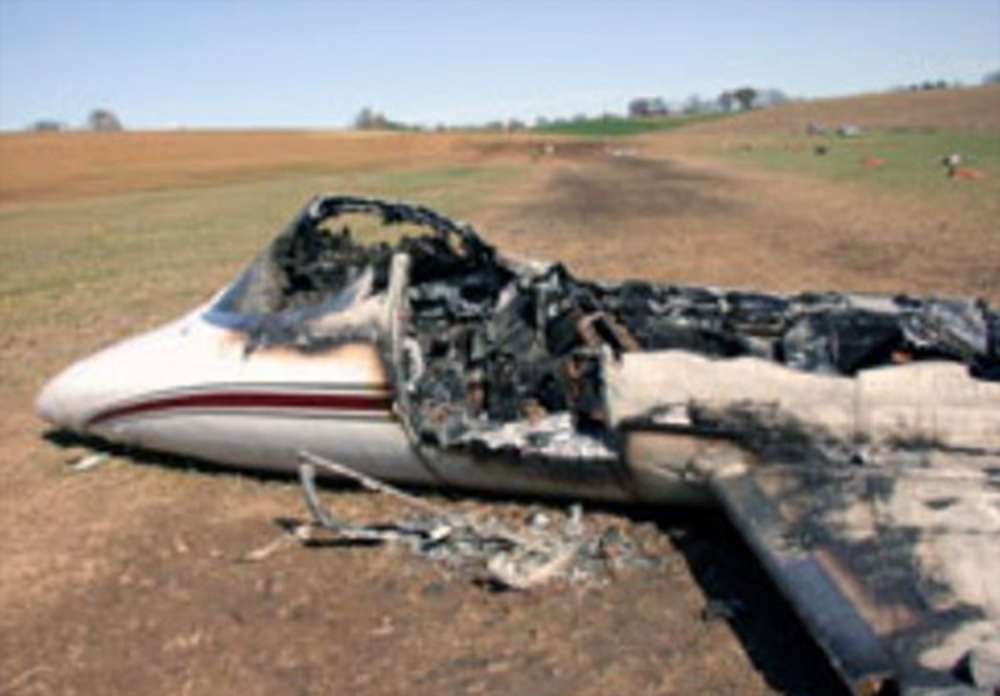


Crash of a Learjet 24D in Sierra Blanca: 2 killed
Date & Time:
Dec 10, 2001 at 1821 LT
Registration:
N997TD
Survivors:
No
Schedule:
Harlingen – El Paso
MSN:
24-247
YOM:
1972
Flight number:
Turbodog36
Crew on board:
2
Crew fatalities:
Pax on board:
0
Pax fatalities:
Other fatalities:
Total fatalities:
2
Captain / Total hours on type:
15000.00
Aircraft flight hours:
7966
Circumstances:
The twin-turbojet, transport-category airplane was destroyed when it departed controlled flight during descent into its final destination and impacted terrain. The flight was cleared to descend from FL 390 to 10,000 feet, and the flight crew established a 4,000-foot/minute descent. As the airplane descended through FL 219, air traffic control requested the pilot contact approach control. However, the pilot read back an incorrect frequency and spoke an unintelligible word. The controller attempted to correct the pilot; however, no additional communications were received from the flight crew. Located within a pause in the pilot's last transmission, a 1680 Hz frequency could be heard for 0.1 seconds. There are only two systems in the airplane with aural warning systems within that frequency range; the cabin altitude warning, and the overspeed warning (both systems were destroyed during the accident sequence). Shortly after the last transmission from the pilot, radar data depicted the airplane climbing back up to FL 231 before entering a steep and rapid descent. A performance study indicated that just prior to the loss of control, the airplane exceeded its maximum operating airspeed of 300 knots calibrated. However, according to the manufacturer, the airplane had been successfully flown at airspeeds up to 400 knots calibrated without loss of control. The right wing and sections of the right horizontal stabilizer/elevator separated from the airplane just prior to its impact with terrain and were located approximately 200-250 feet from the main impact crater. No anomalies with the airframe or engine were found that would have led to the loss of control. A cockpit voice recorder was installed in the accident airplane; however, it did not record the accident flight.
Probable cause:
A loss of control during descent for undetermined reasons.
Final Report:

Crash of a Learjet 24A in Victorville
Date & Time:
Jun 7, 2001 at 1140 LT
Registration:
N805NA
Survivors:
Yes
Schedule:
Victorville - Victorville
MSN:
24-102
YOM:
1966
Crew on board:
2
Crew fatalities:
Pax on board:
1
Pax fatalities:
Other fatalities:
Total fatalities:
0
Captain / Total hours on type:
40.00
Copilot / Total hours on type:
10
Aircraft flight hours:
10679
Circumstances:
The copilot inadvertently induced a lateral oscillation and lost control of the airplane while practicing touch-and-go landings. The pilot made the first touch-and-go. The copilot successfully made the second touch-and-go. The copilot attempted the third touch-and-go. At 50 feet, he disengaged the yaw damper and entered a pilot induced lateral oscillation. The airplane rapidly decelerated and developed a high sink rate. The airplane dragged the right tip fuel tank, which separated from the airplane, and the airplane bounced back into the air. The airplane landed hard, the main landing gear collapsed, and the airplane skidded to a stop off the right side of the runway. Both pilots and the passenger deplaned through the main entry door. The pilot-in-command had not demonstrated the handling characteristics of the airplane with the yaw damper off, and he felt he did not react quickly enough to prevent the accident.
Probable cause:
The copilot inadvertently induced a lateral oscillation resulting in an in-flight loss of control. The pilot-in-command failed to adequately supervise the copilot.
Final Report:
